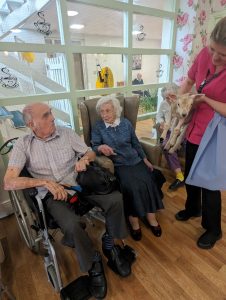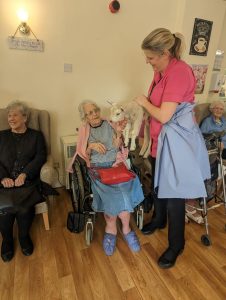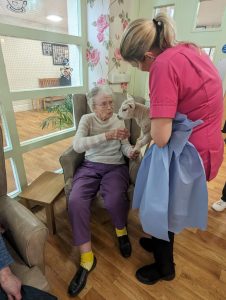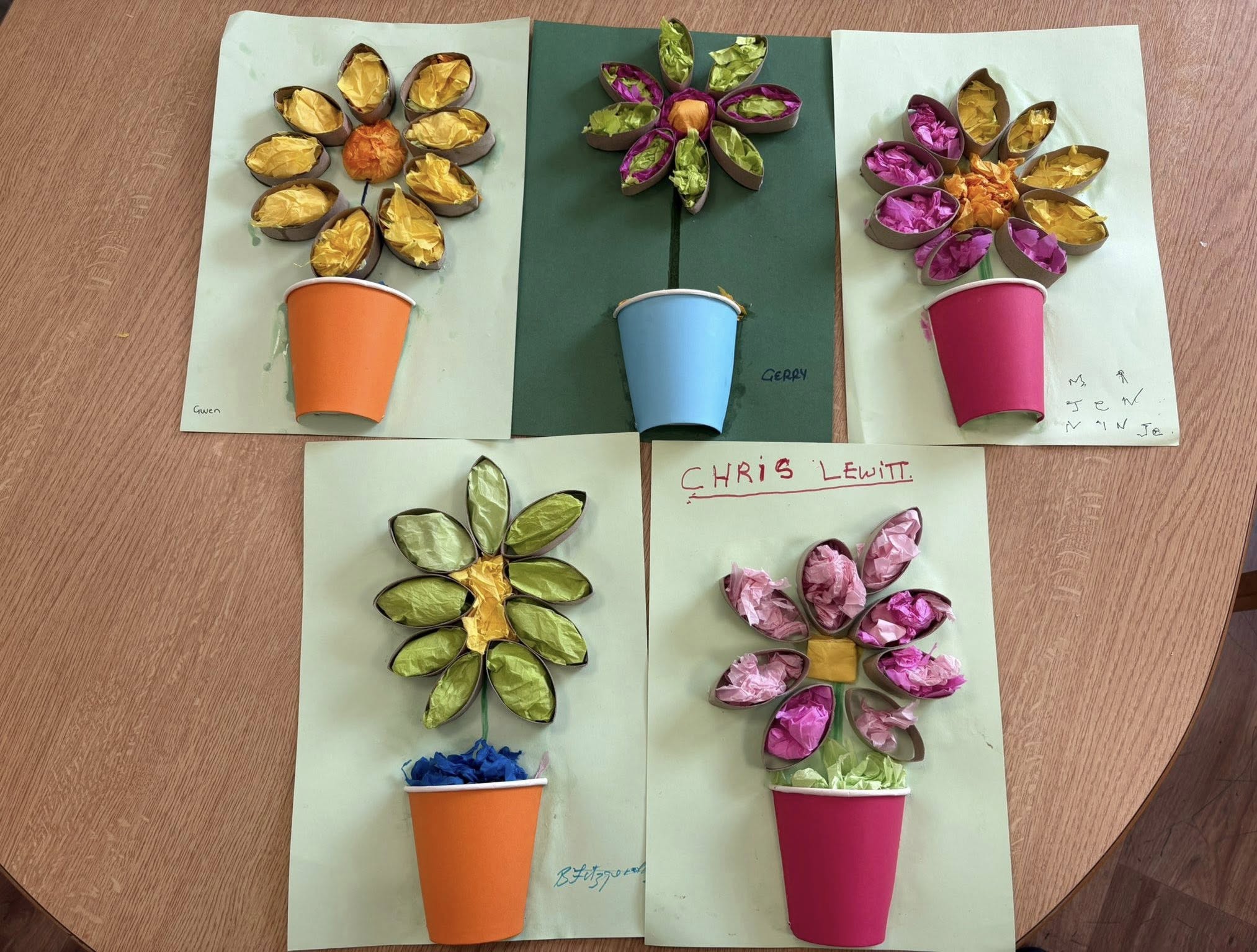Kirby House Care home, part of Leicestershire County Care Home group constantly seeks innovative ways to improve the quality of life for residents, recognising the importance of holistic approaches to care. At Kirby House Care Home, the staff understands the profound impact that animal therapy can have on residents’ well-being. This Easter, our dedicated activities coordinator, Rachel Cleaver, went above and beyond to organise a special animal therapy event, demonstrating Kirby House’s dedication to enhancing residents’ lives through meaningful experiences.
The Kirby House team is passionate about enriching the lives of residents through engaging activities. Recognising the therapeutic benefits of animal interactions, Rachel took the initiative to arrange a memorable Easter event centred around animal therapy. The lambs, hailing from Rachel’s auntie’s farm, brought boundless joy and excitement to our residents, creating unforgettable moments that will be treasured for years to come.
The Easter animal therapy event was a resounding success, with residents eagerly anticipating the arrival of the adorable lambs. Rachel carefully coordinated the visit, ensuring that residents across the care home had the opportunity to interact with the animals. From the communal lounges to individual rooms, the lambs made their rounds, spreading happiness wherever they went.
Animals have an incredible ability to evoke positive emotions and reduce stress levels. For residents in care homes, especially those living with dementia, interactions with animals can provide a sense of comfort, joy, and companionship. The unconditional love and nonverbal communication offered by animals can help alleviate feelings of loneliness and depression, promoting a sense of belonging and purpose.
Animal therapy in care homes, engages multiple senses, providing residents with a rich sensory experience. For individuals with dementia, whose sensory perceptions may be diminished, these interactions can awaken memories, spark curiosity, and improve overall cognitive function.
During their visit, the lambs visited our residents around our lounges, where our residents eagerly awaited their arrival. Our lovely residents showed great interest in the lambs, with many engaging in interactive play and affectionate petting sessions. The feedback from our residents was overwhelmingly positive, highlighting the profound impact that these gentle creatures had on their well-being and happiness.
The lambs also made their way around our residents’ rooms, ensuring that everyone had the opportunity to experience the therapeutic benefits of animal interaction. For residents who may spend more time in their rooms, this visit provided a special opportunity for sensory stimulation and companionship, bringing comfort and joy to their day.
At Kirby House in Leicestershire, we are committed to providing person-centred care that nurtures the mind, body, and spirit of each individual we serve, and incorporating animal therapy into our programming is just one way we fulfill that commitment.
As we look to the future, we are excited to continue exploring opportunities for animal therapy and other enriching experiences that enhance the quality of life for all our residents. The visit from the lambs was a shining example of the power of meaningful connections and joyful moments, and we are grateful for the positive impact it had on our residents’ lives.
The impact of the Easter animal therapy event transcended mere enjoyment; it underscored Leicestershire County Care’s commitment to person-centred care. By prioritising initiatives that promote emotional connection and sensory stimulation, the group reaffirmed its dedication to enhancing residents’ quality of life.
Incorporating animal therapy into care homes is not just about providing entertainment; it’s about enhancing the overall well-being and quality of life for residents, particularly those with dementia. Through sensory stimulation, emotional support, social interaction, and physical activity, animal therapy offers a holistic approach to care that addresses the diverse needs of residents. As care homes continue to prioritise resident-centred care, animal therapy emerges as a valuable tool for promoting health, happiness, and vitality among residents of all ages.
At Kirby House Care Home, we cherish every opportunity to bring laughter, happiness, and comfort to our residents, and we look forward to many more memorable experiences in the years to come.
To get more updates from Kirby House Care Home, please visit our Facebook Page.
If you are looking for a care home in Leicester, find the closest care home to you here.










